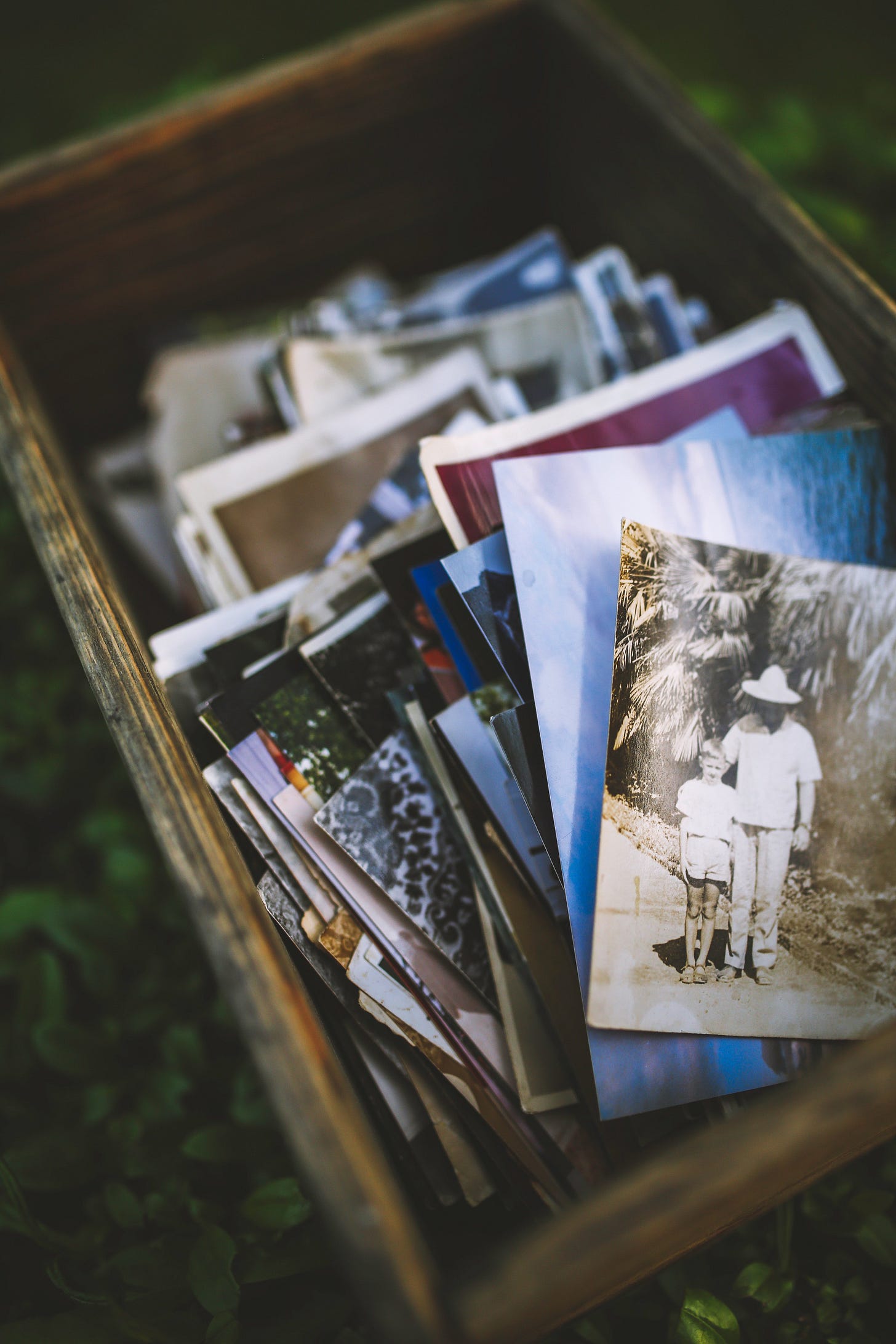Story of Stuff


I have a confession. I'm a packrat.
I’ve spent the last week doing my least favorite activity: packing. I hate being confronted with my stuff, the physical objects that are the chaotic evidence of my earthly existence. As I write this, I’m on a plane to Puerto Rico with my husband and too many suitcases full of kitchen supplies, clothes, and books. We’ve decided to bring the bare essentials with us for now and leave the memorabilia behind in storage.
I have a confession. I’m a packrat notorious for my obsession with memorabilia. I confess that I possess shoebox after shoebox of ticket stubs, art exhibit pamphlets, birthday cards, graduation programs, theater playbills, music festival wristbands, goofy photobooth pics—one shoebox might span several years’ worth of travel and adventures. I’ve kept notes passed between me and my best friend during middle school science class and every single journal I’ve ever written in, including the ones I gave up on after a single entry (I’ve very picky about my journals). I still have the sage wristband gifted to me by a friend after dancing in the South Dakota sun for four days without food and water, as well as a seashell-studded dread cut from a friend’s locks during our college days.
I don’t care that much about giving away clothes; I can even part ways with books—as long as I know they’re going to a good home. Although I have no trouble throwing out entire stacks of financial documents once the 3-year statute of limitations has passed, I couldn’t imagine giving my shoeboxes the same fate.
I’ve had the good fortune of having help. Several friends stopped by the house to assist with sorting clothes and boxing books. While I bemoaned my hoarder tendencies, they were full of suggestions. One of them suggested throwing away vestiges of my earlier life without opening them; the minute I opened up a yearbook or a diary and started reading, I was toast. Another friend suggested that I scan sentimental cards and notes to make a “digital scrapbook.”
I nodded my head; perhaps she was right. I could go on a scanning frenzy and rid myself of this physical detritus! But deep down, I knew that I wouldn’t go the more practical route. A computerized walk down a digital memory lane doesn’t carry with it the same sensibilities as holding in my hand the last card my grandmother sent to me before she died, the scent of flowers and cigarette smoke lingering on the yellowing paper.
Thankfully, my husband does not badger me about my shoeboxes. Instead, he looks over my shoulder when I open one up to see what surprises are inside. He asks me about the items tucked neatly in their corners, and I smile as I recount the stories attached to each one. Like me, he sees these scraps as treasures. Last summer, I found great pleasure in sifting through his boxes of memorabilia while he packed up his life in Germany to move with me across the ocean. A single piece of rope might carry with it a story about a boat that he once worked on and the eccentric elderly couple who owned it.
I don’t hold onto these shoeboxes full of memories in order to live in the past. But every once in a while, usually during those transitional life moments, it brings me joy to touch the past and see where I have been, what I’ve done, and where the road has taken me. Sometimes I wonder—would I be able to recall much of the past if it weren’t for these relics? These physical remnants jog my memory and transport me to earlier versions of myself, of my family, of the world we inhabit.
As a writer, especially a memoir and nonfiction writer, these shoeboxes are tools that I can call upon. As a daughter, I have delighted in stumbling across my parents’ own boxes of memorabilia in the back of their closet and getting a glimpse of their lives before I was in it.
And yet, so much of my life has been documented online. Facebook photo albums, email exchanges, Whatsapp group chats, e-vites to baby showers and weddings and book releases. Some memories are documented only ephemerally, evaporating from the digital landscape after 24 hours.
Whether I like it or not, I do have a digital scrapbook, an archive of memories that exists solely on the world wide web. These are not relics that I can hold in my hands, but perhaps I can still stumble across them unexpectedly. Facebook encourages our need for nostalgia with their throwback posts: Remember when you were sitting in the sun with your friends during your last semester of college? You were just barely twenty-two, the world at your feet. On this day 14 years ago, you wrote a post about how much you loved your cat. Here’s a photo of you harvesting corn with the crew that summer you apprenticed on the organic farm. Look at your tan skin, your easy smile, your pride in doing back-breaking work.
But still, the digital sphere does not promote reflection, if only because of the scrolling format, which prioritizes the latest, up-to-the-minute posts. You don’t accidentally happen upon vestiges of your former self, besides Facebook’s algorithmic throwback posts. The dopamine-inducing platforms encourage constant creation, not necessarily cruising the past. Imagine digging through your profile. How would one even start such an exercise? Of course, some of it is organized in digital photo albums and such. But most is not. The thought of scrolling farther and farther back into my Facebook profile gives me hives. I’m sure there are gems—forgotten photographs, a kind note from a friend—hidden within the depths of my online footprint, but it would take a concerted effort on my part to go digging.
A few years ago, when I was embarking on my social media sabbatical, I didn’t know whether I would ever return to the world of social media. I was planning on deactivating my Facebook and I didn’t want to lose everything I’d ever shared or received on the site. My husband showed me how to download my entire Facebook history into a zip drive on my computer. And so, somewhere on my hard drive sits the digital detritus of half a lifetime of Facebook existence. I’ve never opened it.


